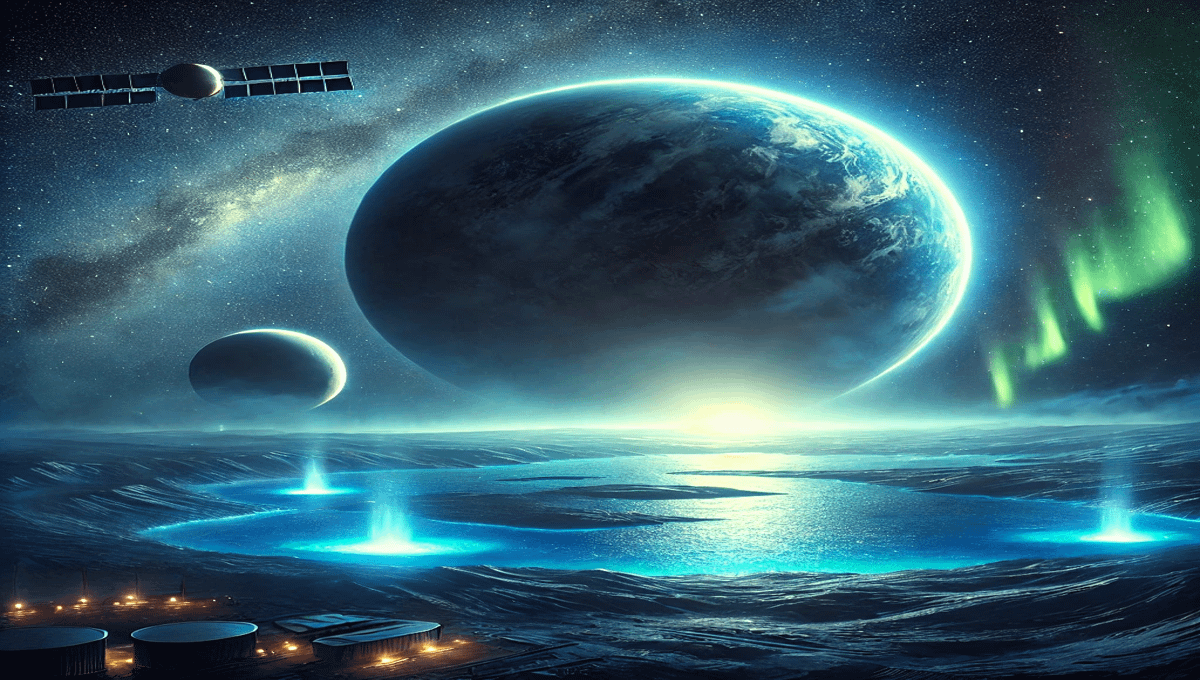Have you ever stared at the stars and wondered how our universe came to be? Those twinkling lights hide epic stories of planets, stars, and mysteries waiting to be solved. In 2025, scientists uncovered something wild—a super-Earth called K2-18b that’s changing how we think about planets and maybe even life out there. This discovery is like finding a new piece of a cosmic puzzle, and it’s got everyone buzzing. Could this planet hold the key to alien life? Let’s dive into this thrilling find and see what it’s all about!
What a Super-Earth, Anyway?
Picture a planet that’s like Earth but on steroids—bigger, heavier, and totally different. That’s a super-Earth. These planets are larger than our home but smaller than gas giants like Neptune. They can be two to ten times Earth’s mass, and they’re not in our solar system but scattered across the galaxy. NASA’s found over 5,800 planets outside our solar system (called exoplanets), and tons of them are super-Earths
The star of 2025 is K2-18b, a super-Earth 124 light-years away in the Leo constellation. It orbits a cool red dwarf star and is 2.6 times bigger than Earth with 8.6 times its mass. The coolest part? It’s in the Goldilocks zone—not too hot, not too cold, just right for liquid water, which is a big deal for life.
K2-18b: The Super-Earth Stealing the Spotlight
Thanks to the James Webb Space Telescope (JWST), scientists got a close-up look at K2-18b’s atmosphere in 2025, and the results were jaw-dropping. They found gases like methane, carbon dioxide, and maybe even dimethyl sulfide (DMS). On Earth, DMS is made by tiny sea creatures called phytoplankton, so this got scientists super excited. Could this mean life? They’re not sure yet—those chemicals could come from non-living processes too, so they’re keeping it chill for now.
K2-18b might be a Hycean planet, which is a fancy way of saying it could be covered in massive oceans with a hydrogen-heavy atmosphere. Imagine a world that’s one giant, alien sea! The telescope watched K2-18b pass in front of its star (called a transit) to study its atmosphere, giving us clues about how super-Earths are made and whether they could host life
How Do Planets Like This Even Form?
Planets start in a messy, cosmic nursery. When a star is born, it’s surrounded by a swirling disk of dust and gas called a protoplanetary disk. Tiny bits of stuff bump into each other, sticking together like cosmic snowballs until they grow into planets. This process, called accretion, is how Earth formed, but super-Earths like K2-18b throw a curveball
K2-18b’s low density (2.67 g/cm³) suggests it has a rocky core wrapped in a thick layer of gas or ice. Its atmosphere, full of hydrogen, water, and methane, hints that super-Earths form around stars with lots of light gases. Another 2025 discovery, OGLE-2016-BLG-0007, showed that super-Earths are super common and come in all sorts of flavors, depending on the star and the disk they form in. This is helping scientists tweak their ideas about how planets come to be
Why This Matters
This isn’t just about nerdy science stuff it’s about figuring out our place in the universe. Studying K2-18b could tell us if Earth-like life exists elsewhere. Those ocean-covered Hycean planets might be perfect for tiny microbes, which would be a huge deal. Plus, learning about super-Earths shows us how diverse planets can be
Looking ahead, projects like the Ariel Telescope (launching in 2029) and the PLATO mission will dig deeper into super-Earth atmospheres. Even India’s space agency, ISRO, is jumping into exoplanet research, which could lead to more breakthroughs. Every discovery brings us closer to answering the big question: Are we alone?
READ ALSO Are We Truly Alone? Astronomers Discover Signs of Alien Life on a Distant Planet
Wrapping It Up: A Cosmic Adventure
The 2025 super-Earth discovery is like opening a new chapter in the universe’s storybook. K2-18b isn’t just teaching us how planets form—it’s making us wonder if alien life is out there, waiting to be found. With every new clue, we’re piecing together the grand puzzle of existence
What do you think? Could super-Earths like K2-18b redefine what we believe about life? Drop your thoughts below and share this with your friends to get them in on this cosmic journey

